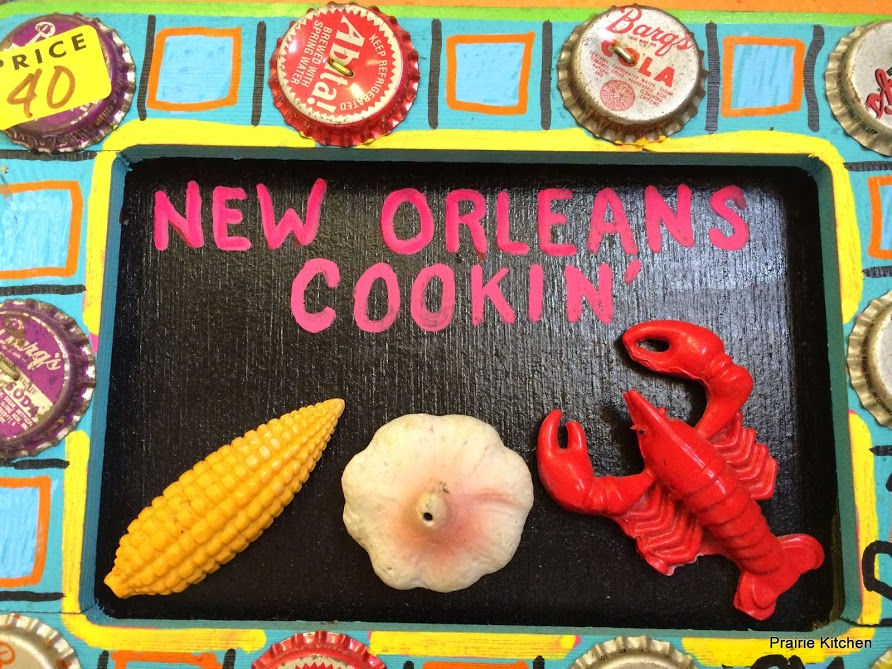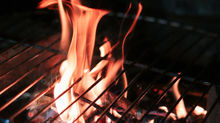Throw me something, mister!
- Arlene Coco
- Feb 4, 2021
- 5 min read
The battle cry of the revelers is usually Laissez le bon temps rouler! which means "Let the good times roll"
This year, the familiar phrase down south will have to change to "Que les bons moments roulent malgré la pandémie." Let the good times roll despite the pandemic.
It has been said that Mardi Gras is the greatest free show on Earth. With over 15 Carnival seasons under my belt, I can attest that this is a fact. I remember as a child waiting in the streets for what seemed like forever to see the endless parade of masked Kings and Queens, and yelling “Throw me something, Mister!” until one of the majestic surreal knights took pity on me and threw a clump of beads at me that could have knocked me out had I not been paying attention.
At the end of the day, I had about 50 strands of beads around our necks, which I had to take off one by one. As I got older, this became a little more difficult after a hard day of partying.

Mardi Gras Day started early. To get a good spot, we parked and set up for that first parade, which usually started at 8 a.m. We always packed food for the whole day and set up in a spot about 50 feet from the parade route street if we could. We would stage there out of the fray and use it as a resting spot between parades.
Urban picnicking is a refined art in New Orleans during Mardi Gras. You start off with beignets (French doughnuts) and cafe au lait, or other doughnuts that can be eaten with your hands. After a few parades, and if you are old enough to imbibe, screwdrivers, hurricanes or beer are the order of the day.
(As I got older, I learned that it is paramount to “pace” yourself on food and drink because if you don’t, you will be like the Yankee tourist next to you who is sleeping by 2 p.m. right on the boulevard. (The police on horseback like to ride by and give you a jab with their stick if you are not moving.)
For lunch, there is only one choice — Popeye’s Fried Chicken. It can be eaten cold, with your hands, and in between parades. My Aunt Mary, a New Orleans native, speculates that Popeye’s probably makes enough profit from Mardi Gras to carry them through the year.
Back in the day, Aunt Mary used to fry her own chicken the night before Carnival and stash it in the fridge. She fondly remembers Mardi Gras as some of the best times of her life. It was a family tradition that crossed generations — because if you didn’t go to Carnival celebrations, there was not much else to do.

Mardi Gras history- How it all got started
French explorer Iberville discovered the land that is now New Orleans and on March 3, 1699, christened the site Point du Mardi Gras. Carnival (as the locals call it) was created as a period of merriment that would serve as a prelude to the season of Lent, which starts on Ash Wednesday. Mardi Gras Day (Fat Tuesday) is the last day of the Mardi Gras Carnival season.
Mardi Gras can occur on any Tuesday from Feb. 3 through March 9. The fluctuating date was established by the Roman Catholic church. It is always scheduled 46 days before Easter (the 40 days of Lent plus six Sundays). The official start of Mardi Gras is Twelfth Night or the feast of the Epiphany (12 days after Christmas), which is Jan. 6. This year, Mardi Gras Day is Tuesday, March 1.
The first Mardi Gras festivities were held in 1857 and the first organizers were called Comus. They coined the word Krewe and established several Mardi Gras traditions by forming a secret Carnival society, choosing a mythological namesake, presenting a themed parade with floats and costumed maskers, and staging a huge ball at the end of the parade.
Also around the same time, a group called the Twelfth Night Revelers made history when a young woman was presented with a golden bean hidden in a giant cake. She was named Mardi Gras' first queen. A visit by the Russian Grand Duke Alexis Romanoff helped inspire the creation of the King and Queen as the international symbols of Mardi Gras, along with the famous King Cake.

America's greatest party
Mardi Gras is much like Christmas now: There has to be a season to accommodate all the parties. The New Orleans Mardi Gras season starts on Epifiny and is in full swing 2 weeks before with the city's first parade, to be followed by more than 50 parades leading up to Fat Tuesday.
Mardi Gras Day started early. To get a good spot, we parked and set up for that first parade, which usually started at 8 a.m. We always packed food for the whole day and set up in a spot about 50 feet from the parade route street if we could.
The official colors of Mardi Gras are purple, green, and gold as proclaimed by Rex, the first king of Carnival, back in 1872. Purple represents justice, green stands for faith, and gold stands for power (or money).

There is no overall theme for Mardi Gras, but each parade must focus on a specific subject. The floats, costumes, and throws all revolve around that theme. Almost all of the Mardi Gras parades begin with the King and Queen leading the parade. They are followed by many floats, which carry the members of the krewe.
It is an honor to be on a float today, but it's expensive. Being a Krewe member can cost thousands because you must not only buy all of your own trinkets and throws, but you also must put time into the club to build the floats, organize the parties, and be actively involved in the Krewes' charitable work. The rules are very strict if you ride a float- you can NEVER remove your mask while you are riding. You will immediately get sprung from the float. My friends who ride tell me they start the day knee-deep in beads and throws
Perhaps it's a stretch to think about parading around outside in colder climates this time of year, but you can have a great Mardi Gras experience without the mob scene of New Orleans. The Internet offers all the supplies, even down to the King Cake.
Just follow the cardinal rules of Mardi Gras revelers: Decorate in green, purple, and gold; cook up the traditional recipes; put on some Cajun music and Laissez Les Bon Temps Rouler!
If you can't get King Cake this Mardi Gras, my Blueberry Bread and Butter Pudding is a great stand-in for a festive and simple dessert to celebrate Fat Tuesday.
Blueberry Bread and Butter Pudding
This classic dessert never misses. You can substitute 8 egg whites for whole eggs or egg beaters equivalent. Whole wheat bread can be substituted for white bread with great results.
Serving size: 12
Ingredients:
2 tablespoons unsalted butter softened
6-8 cups bread cubes
4 large eggs
1/2 cup granulated sugar
2 teaspoons almond extract
1/2 teaspoon grated nutmeg
1 teaspoon ground cinnamon
1 -quart milk or cream or fat-free half and half
1 1/2 cups thawed blueberries or fresh
Salted Caramel Butterscotch Sauce See Recipe Below
Directions:
1. With fingers, spread butter evenly in the bottom of a 9x13 oven-proof pan.
2. Tear or cube bread into one-inch pieces, place in dish.
3. Beat eggs and sugar, add extract, seasonings, and milk or cream.
4. Pour egg mixture over bread cubes, add blueberries.
5. Bake at 350F for approximately one hour or until puffy brown.
Salted Caramel Butterscotch Sauce
Serving size: 12
This is my go-to sauce for all desserts that need a little extra flavor. You will want to suck it up with a straw, trust me, it's amazing, and oh so easy.
Ingredients:
3/4 cup firmly packed brown sugar
5 tablespoons butter
1 teaspoon Flake salt
1 cup heavy cream (or coconut cream)
Directions:
For the butterscotch sauce, combine ingredients in a medium saucepan and stir over low heat until the sauce is smooth and slightly thickened. Freezes great








































Comments